The Oldenburg horse, fondly called the Oldenburger, is a renowned German horse breed. This horse breed has been around since the 17th century and isn’t going away anytime soon.
Oldenburgs are well-known in sports for their elastic gaits and jumping ability. They’re also not only intelligent and hardworking but very social and kind.
In this article, I’ll share with you everything there is to know about this incredible equine.
So, buckle up, and let’s explore all that makes the Oldenburg the very rare gem it is.
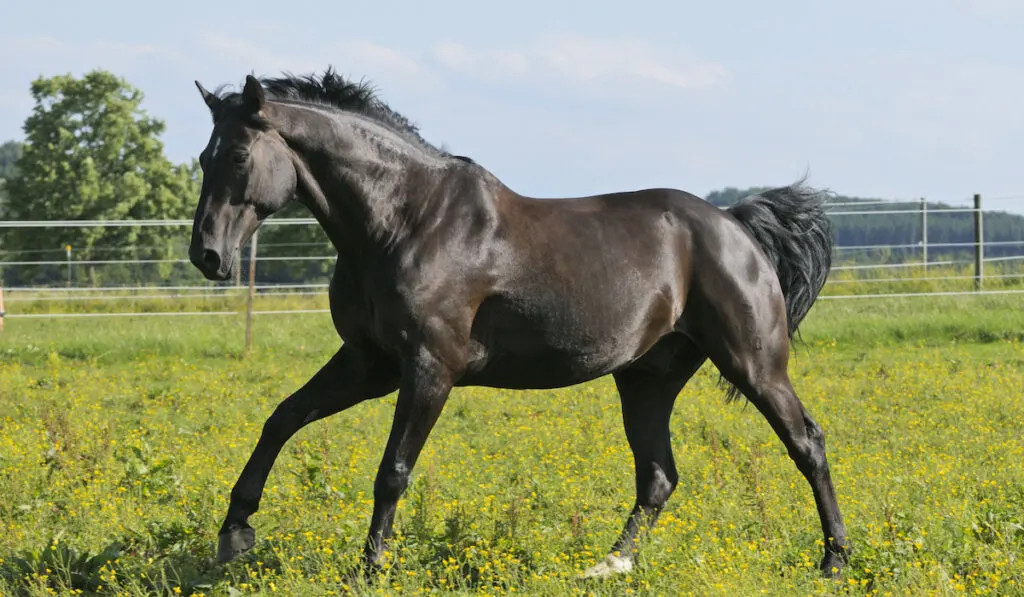
Table of Contents
Quick Information
| Breed Name | Oldenburg |
| Other Names | Oldenburger, The Duchy of Oldenburg |
| Personality | Very social, smart, and hardworking |
| Physique | Compact, strong, well-muscled body |
| Traits | Highly intelligent, kind, calm, enthusiastic |
| Height | 16. 0–17.2 hands (adult) |
| Weight | 1,200–1,500 lbs |
| Colors | Grey, black, brown, bay, and chestnut |
| Health | Healthy, resistant to most equine diseases |
| Lifespan | 25–28 years |
| Ancestry | Mixed/Diverse |
| Type | Sports horse, show horse |
| Feeding/diet | Both hay and grains |
| Availability | Common |
| Country of origin | Germany |
| Registered Breed Association | Oldenburg Horse Breeders Association German Oldenburger Verband |
History/Origin
The Oldenburg is a warmblood horse breed with roots dating back to the 17th century when Spanish stock was introduced to native mares from the Oldenburg region of Germany.
Count Johan XVI took an interest in horse breeding, leading him to cross Neapolitan, Barb, Turkish, and Frederiksborg stallions with local Friesian mares.
This interest was passed down to his successor, Count Anton Gunther, who is regarded as the father of the Oldenburg breed.
Count Anton Gunther imported stallions from Naples, Spain, Poland, England, Tartary, and Barbary, intent on creating solid riding and carriage horses.
He also made them accessible to his tenants for breeding. These breeding processes resulted in the production of tall, elegant Oldenburg horses.
Since there were no state-owned stud farms, breeders could crossbreed freely, but that changed in 1820.
The government passed a law permitting only government-approved studs for breeding purposes.
As the industrial age came in with the advent of automobiles, carriage horses were no longer required, and horse breeders had to change tactics towards producing riding horses able to compete in sporting events.
Condor, a dark bay Anglo-Norman horse, and other horses, including Thoroughbreds and Anglo-Arabs, were mated with Oldenburgers to improve the breed’s qualities—speed, agility, and gait.
Breeders achieved better results with Condor, and that made them choose French sires over German ones.
A French Anglo-Arabian stallion also donated his expressive gaits and dry features to the line, which is one of the most desirable traits of Oldenburg horses today.
The Oldenburg Horse Breeders Association was formed in 1923 and has been responsible for maintaining the breed standards ever since.
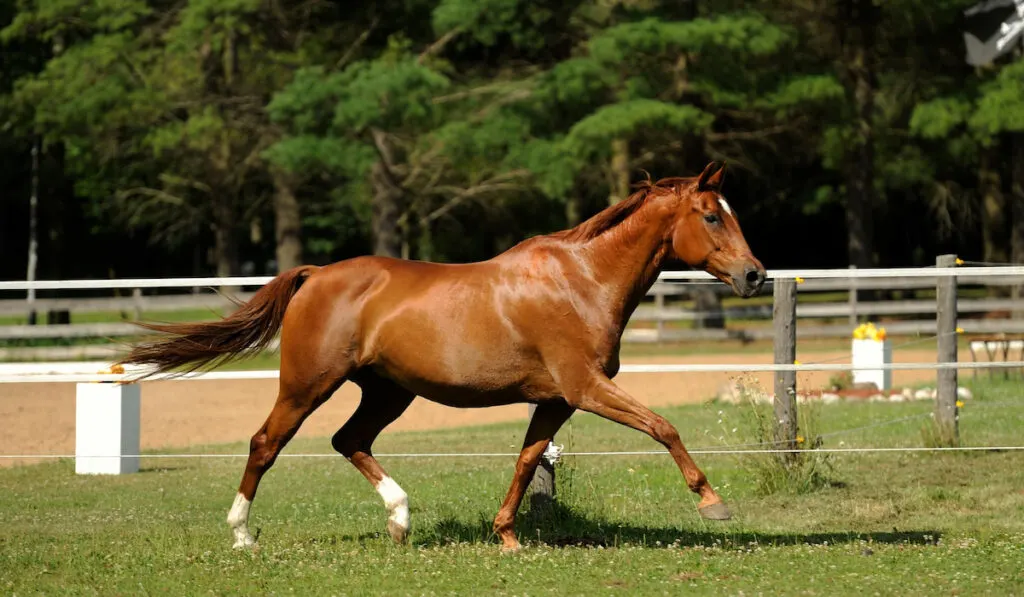
Breed Characteristics
Oldenbergs are popular as agile, athletic horses.
They are compact, despite their size, with powerful hind limbs and good strong joints.
They also have an expressive and elastic gait and excellent jumping skills. Hence, their popularity as sport horses.
Oldenburg horses are built with long, muscular necks, deep chests, and large hooves to bear their weight.
They have refined heads, pointy ears, and expressive eyes. They also have long, well-angled shoulders, prominent withers, and strong backs.
Temperament
Oldenburgs are renowned for being very willing to work and having a kind temperament, although some can be fussy if their riders are not confident enough— especially during jumping.
They are also intelligent, independent, and sensitive enough to perform excellently at the highest competition levels.
They are usually easy to handle, curious, friendly, and willing to tackle whatever sport their rider is interested in.
Weight and Height
Oldenburgs are not your average equine breed. They are considered a tall and heavy breed.
The average Oldenburger can weigh up to 1,700 lbs, standing between 16.0–17.2 hands.
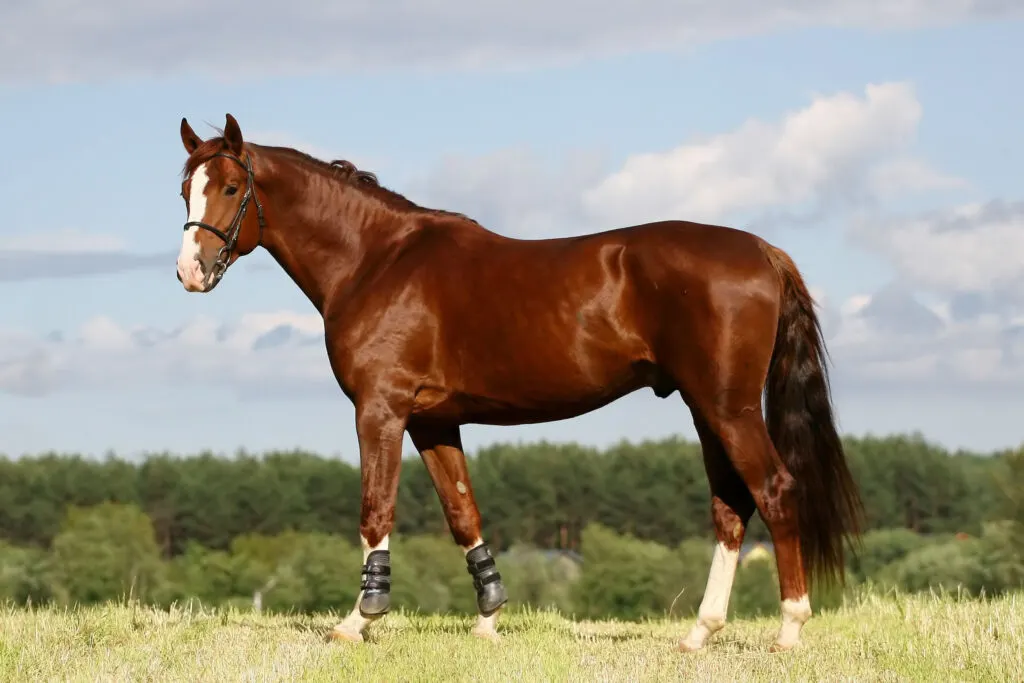
The Physical Conformation and Personality Traits of Oldenburgs
An ideal Oldenburg has a large frame and a well-proportioned body.
It has a regal appearance complemented by a refined, elegant head and expressive eyes.
Its prominent withers hold the saddle in place and fit perfectly with its long, graceful, sloping neck.
They have muscular shoulders and forelimbs with good, strong joints.
Their front and back pasterns are flexible, and their hooves are strong and well-formed to bear their weight.
They are athletic and agile and can be used in almost all disciplines.
However, although the Oldenburg is friendly and can be ridden by all kinds of riders, beginners might find it hard to handle because of its sense of independence and curiosity.
The Lifespan of the Oldenburg
These horses are among the longest-living horse breeds available and can be long-term companions if that’s what you’re looking for.
This breed has a lifespan of almost 30 years, which is longer than most horse breeds.
Colors
Oldenburgs come in varying colors. They are:
- Brown
- Black
- Gray
- Chestnut
- Bay
- Pinto
- Tobiano
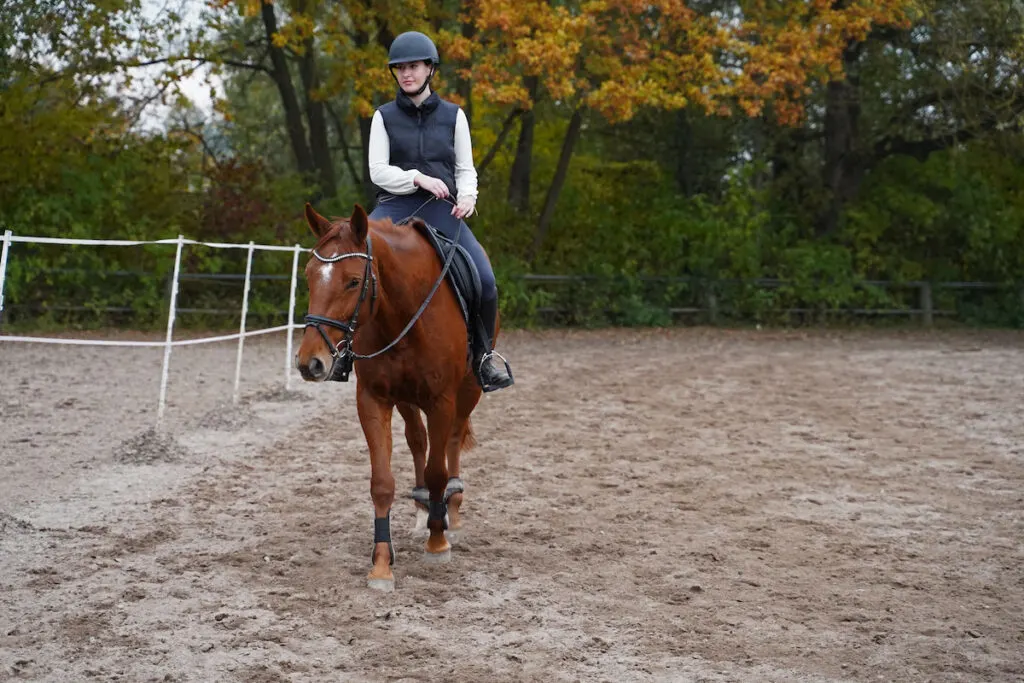
Uses
Oldenburg horses are highly adaptable and have a wide range of uses.
They are classified under the “hunter-type” class of horses, well adapted to jumping, dressing, 3-day events, and occasionally driving.
They are very impressionable and can learn patterns quickly, making them especially good for show jumping.
The Oldenburg breed excels at dressage and has been named among the top 3 breeds in the world rankings in the dressage ring.
They are not as good at eventing as other breeds, as they are considered slow unless they have a Thoroughbred as a direct sire.
They also make beautiful carriage horses.
Modern-day Oldenburgs are bred for riding and competitions in most disciplines.
Association Regulations and Registration
Oldenburg foals must be registered within a year of being born. They are presented at a registration event before they are weaned so that their color and markings can be recorded.
They are registered with a microchip, and a hair sample is taken to verify ancestry.
The microchip number and the number of the DNA analysis are then entered into the Certificate of Pedigree or Certificate of Birth that will be issued.
They are usually branded (between 0–2 years) on the left flank or hip with an ‘O’, a crown, and a 2-digit number taken from the horse’s registration number—but that’s not compulsory.
Their breeding processes also follow a strict regimen.
Before an Oldenburg stallion is mated with a mare, it must first be vetted through a series of processes that evaluate his courage, disposition, eagerness to work, and other peculiar traits.
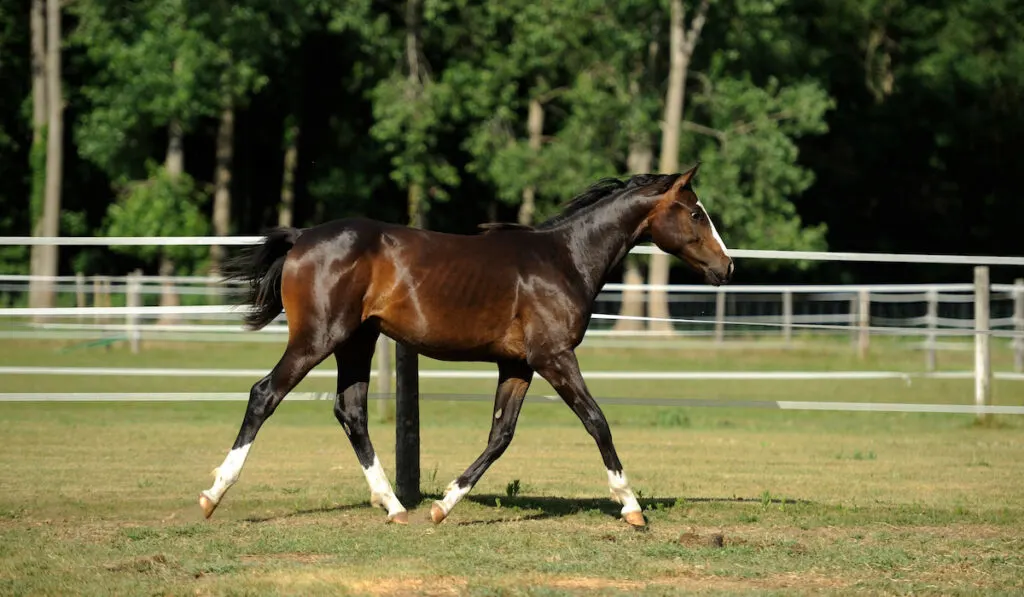
Health Problems
Oldenburg horses are very healthy and usually have a low incidence of genetic problems, even being one of the most inbred breeds with low genetic variation.
While they are not likely to develop any specific diseases, certain bacterial and fungal infections can affect them. They include:
- Ringworm
- Thrush
- Rain rot
- Scratches
These infections can be prevented by proper grooming and maintaining proper hygiene.
They are a curious breed, so attention should be given to keeping their surroundings free of objects that could cause injury to them.
Notable Mentions
Some notable events and horses in the history of Oldenburgers are worth mentioning. Here are a few:
- Donnerhall:
This dressage stallion was famous for his successful sports career and for passing on his traits to his offspring. He lived for 21 years (May 31, 1981 – January 14, 2002).
A life-size statue of Donnerhall was erected in Oldenburg, Germany, and is still there to date.
- Gestion Bonfire:
He is also a famous dressage horse that won numerous international and national competitions. He also has a statue in his hometown, Erp.
He was known to have been hot-tempered, but that quickly died as he aged.
- Sandro Hit:
At 6 years, Sandro became the dressage world champion. He won the title of Best Young Stallion in 2000, and he went on to sire horses that won 11 German championships.
He is one of the most beautiful Oldenburgers to date with his lustrous black coat.
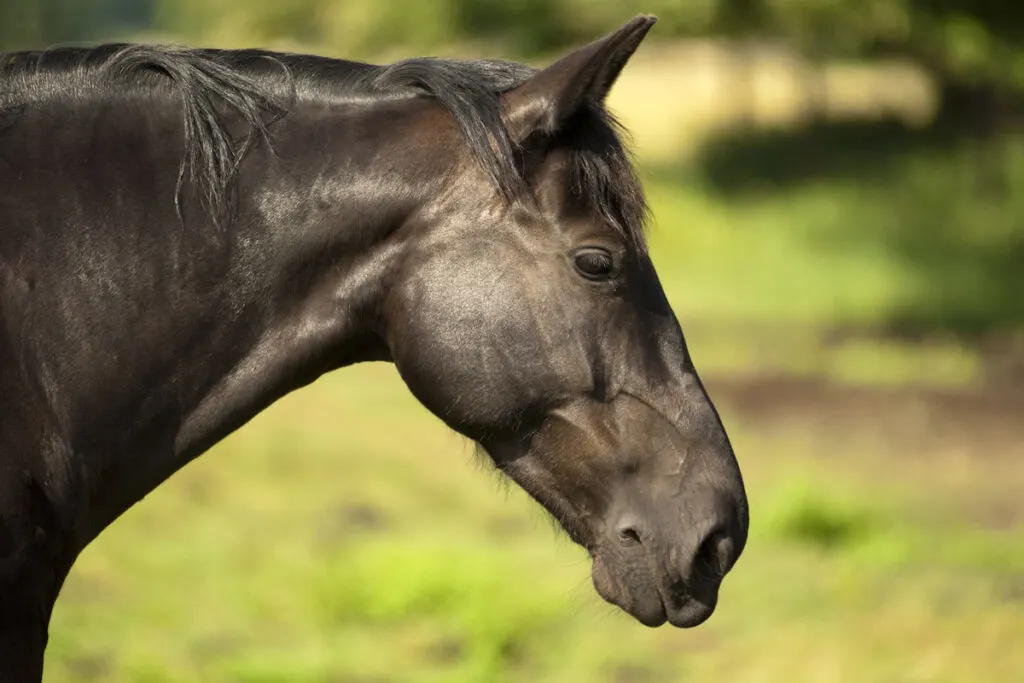
Fun Facts About Oldenburgers
- They are named after Count Johann XVI von Oldenburg.
- They have an unlimited color range. Color is not one of the breed standards.
- They require plenty of exercise and attention.
- They are naturally curious and inquisitive.
- They were initially carriage horses and still make beautiful and elegant ones today.
- They have a particular naming pattern for their offspring. Colts are named with the first letter of the sire’s name and fillies are named with the first letter of the dam’s name.
- They are highly resistant to most equine diseases with a low incidence of congenital diseases.
- They have one of the smallest breeding programs in the world.
- They are all tested for authenticity before registration.
- Their prices usually range from $5,000 upwards.
Final Thoughts
If you are considering raising an Oldenburger, you should be a little experienced in horse riding.
Aside from that, they are a wonderful breed to own, and once you earn their trust, it is highly improbable you will lose it.
Make sure to contact a trusted breeder to guide you in your decision-making.
Individual horses vary, so picking one that suits your riding needs should be done by someone more knowledgeable about their traits and peculiarities.
Resources
- https://horsesonly.com/oldenburg-horse
- https://en.m.wikipedia.org/wiki/Oldenburger
- https://amazinghorsefacts.com/oldenburg-horse/#colors
- https://www.horseillustrated.com/horse-breeds-horse-breed-articles-the-oldenburg/amp
- https://horse-canada.com/breeds/oldenburg/amp
- https://www.globetrotting.com.au/horse-breed-oldenburg
- https://breeds.okstate.edu/horses/oldenburg-horses.html
- https://karinabrez.com/blogs/news/oldenburg-horse-origin-and-characteristics
- https://pets.webmd.com/what-to-know-about-the-oldenburg-horse
- https://horseracingsense.com/oldenburg-horse-breed-facts-colors-origin
- https://cowgirlmagazine.com/facts-oldenburg-horse
- https://horses.animal-world.com/Light-Horse-Breeds/Oldenburg.php
- https://karinabrez.com/blogs/news/13-cool-oldenburg-horse-facts
- https://oldenburger-pferde.com/en/breeding/foals/registrierung.html
- https://www.savvyhorsewoman.com/2022/08/how-long-do-horses-live.html

